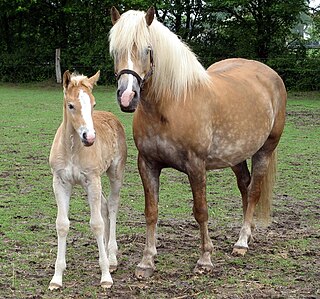 W
WThe Haflinger, also known as the Avelignese, is a breed of horse developed in Austria and northern Italy during the late 19th century. Haflinger horses are relatively small, are always chestnut with flaxen mane and tail, have distinctive gaits described as energetic but smooth, and are well-muscled yet elegant. The breed traces its ancestry to the Middle Ages; several theories for its origin exist. Haflingers, developed for use in mountainous terrain, are known for their hardiness. Their current conformation and appearance are the result of infusions of bloodlines from Arabian and various European breeds into the original native Tyrolean ponies. The foundation sire, 249 Folie, was born in 1874; by 1904, the first breeders' cooperative was formed. All Haflingers can trace their lineage back to Folie through one of seven bloodlines. World Wars I and II, as well as the Great Depression, had a detrimental effect on the breed, and lower-quality animals were used at times to save the breed from extinction. During World War II, breeders focused on horses that were shorter and more draft-like, favored by the military for use as packhorses. The emphasis after the war shifted toward animals of increased refinement and height.
 W
WThe Bardigiano is a breed of small horse from the Emilia Romagna region of Italy. It takes its name from the town of Bardi, in the Apennines of Parma, and is principally associated with the surrounding area and the Valle del Ceno. The mountain environment and steep, rough terrain of the area have contributed to produce a robust, hardy breed, agile and sure-footed over difficult ground. Although some males and all females are under 14.2 hands, the Bardigiano is always considered a horse in its home country. The stud book was established in 1977, and is held by the Associazione Provinciale Allevatori, the regional animal breeders' association, of Parma. The breed is widely distributed in Italy, with breeders in 26 Italian provinces; a recent study examined 3556 stud book entries for living horses. Due to these relatively large numbers, the breed is not considered to be at risk of extinction, but is classed as "vulnerable".
 W
WThe Cavallo Romano della Maremma Laziale, or "Roman horse of the part of the Maremma that is in Lazio", is a horse breed native to the Lazio region of Italy. An ancient breed, it was officially recognised only in 2010; it is now one of the fifteen indigenous horse "breeds of limited distribution" listed by the AIA, the Italian breeders' association. The Lazio region has assigned it the conservation status "at risk of erosion". The population numbers about 800, of which most are in the comune of Monte Romano in the province of Viterbo; a herd of approximately 200 is at Ponzano Romano in the province of Rome, and others are in the province of Rieti.
 W
WThe Esperia Pony is a breed of pony originating in the area of the Aurunci Mountains and Ausoni Mountains near Esperia in the province of Frosinone, in the Lazio region of Italy. It is one of the fifteen indigenous horse "breeds of limited distribution" recognised by the AIA, the Italian breeders' association. It is the only Italian breed to be officially denominated a pony.
 W
WThe Giara horse is a horse breed native to the island of Sardinia. It is one of the fifteen indigenous horse "breeds of limited distribution" recognised by the AIA, the Italian breeders' association. While of small size due to the hostile environment in which it lives, and sometimes called a "pony," it is considered a true horse.
 W
WThe Haflinger, also known as the Avelignese, is a breed of horse developed in Austria and northern Italy during the late 19th century. Haflinger horses are relatively small, are always chestnut with flaxen mane and tail, have distinctive gaits described as energetic but smooth, and are well-muscled yet elegant. The breed traces its ancestry to the Middle Ages; several theories for its origin exist. Haflingers, developed for use in mountainous terrain, are known for their hardiness. Their current conformation and appearance are the result of infusions of bloodlines from Arabian and various European breeds into the original native Tyrolean ponies. The foundation sire, 249 Folie, was born in 1874; by 1904, the first breeders' cooperative was formed. All Haflingers can trace their lineage back to Folie through one of seven bloodlines. World Wars I and II, as well as the Great Depression, had a detrimental effect on the breed, and lower-quality animals were used at times to save the breed from extinction. During World War II, breeders focused on horses that were shorter and more draft-like, favored by the military for use as packhorses. The emphasis after the war shifted toward animals of increased refinement and height.
 W
WThe Italian Heavy Draft, or Rapid Heavy Draft, is a breed of draft horse from Italy. The full Italian name of the breed is Cavallo Agricolo Italiano da Tiro Pesante Rapido, "Italian Rapid Heavy Draft Farm Horse", and the abbreviation TPR ) is often used.
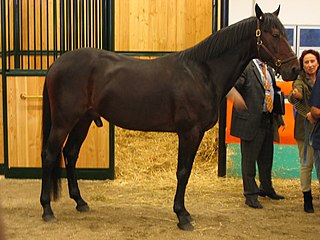 W
WThe Italian Trotter, Italian: Trottatore Italiano, is the Italian breed of trotting horse. It has been selectively bred exclusively for its racing ability. Varenne, one of most successful trotters in the history of the sport, was an Italian Trotter.
 W
WThe Lipizzan or Lipizzaner, is a horse breed named for the Lipizza Stud of the Habsburg monarchy. The breed is closely associated with the Spanish Riding School of Vienna, Austria, where the horses demonstrate the haute école or "high school" movements of classical dressage, including the highly controlled, stylized jumps and other movements known as the "airs above the ground." The horses at the Spanish Riding School are trained using traditional methods that date back hundreds of years, based on the principles of classical dressage.
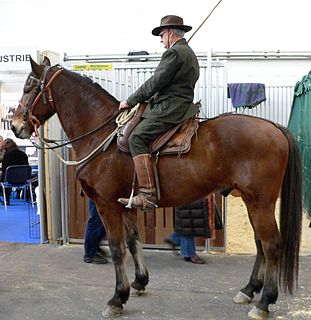 W
WThe Maremmano is a breed of horse originating in the Maremma area of Tuscany and northern Lazio in Italy. Traditionally a hardy working horse used by the Butteri for livestock management, it is today principally a saddle horse. Extensive crossing with Thoroughbred and other breeds has led to a more athletic type, the Maremmano migliorato, or "Improved Maremmano".
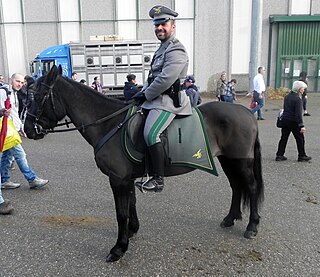 W
WThe Monterufolino or Cavallino di Monterufoli is a breed of small horse originating in the province of Pisa, in the Tuscany region of Italy. It is one of the fifteen indigenous horse "breeds of limited distribution" recognised by the AIA, the Italian breeders' association. It takes its name from a former farm estate, the "Tenuta di Monterufoli", now broken up, which covered some 4000 Ha in the comuni of Pomarance, Montecatini Val di Cecina and Monteverdi Marettimo.
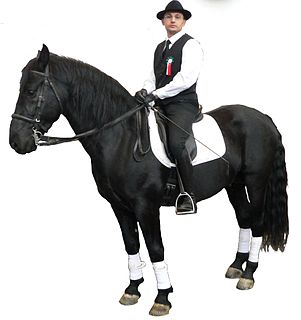 W
WThe Murgese horse originated in the Murge, Apulia area of Italy during the Spanish rule, and was developed from Barb and Arabian horses. They are a hardy breed that is used mainly for cross-country riding, although they have also been used for light draft work.
 W
WThe Neapolitan Horse, Italian: (Cavallo) Napoletano, Neapolitano or Napolitano, is a horse breed that originated in the plains between Naples and Caserta, in the Campania region of Italy, but which may have been bred throughout the Kingdom of Naples. The Neapolitan horse was frequently mentioned in literature from the 16th to the 19th centuries, and is noted for its quality. Corte wrote in 1562: "in Italy the horses of the Kingdom of Naples are greatly esteemed; [there] many fine coursers are born ... suitable for use in war and in the manège and for every service that the rider may require". The decline of the breed was noted in the early 20th century by Mascheroni (1903) and Fogliata (1908). Some sources state that by 1950, the original Neapolitan horse was deemed extinct, but its lines were incorporated into other breeds, most notably the Lipizzaner. However, a breed called the Napolitano exists in Italy today, and is recognized by the Italian government. According to Gouraud, "a dedicated breeder ... is hoping to be able to rebuild it". La Repubblica reports that the attempt is based on a single stallion, Neapolitano "Il Vecchio", which belonged as a foal to Marshal Tito and passed when old to a Serbian farmer, from whom it was purchased and imported to Italy in 1989.
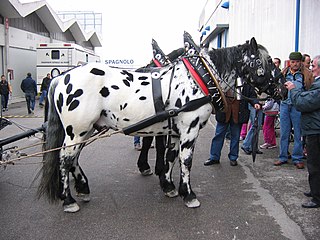 W
WThe Noriker horse, also called the Norico-Pinzgauer and historically known as the Pinzgauer horse, is a moderately heavy Austrian draught horse breed. The Noriker is considered indigenous to the central Alpine region of Europe, and is believed to have originated around the highest mountain of Austria, the Grossglockner. This region was once known as the Roman province of Noricum. At the end of the 19th century the original name Pinzgauer horse was changed to Noriker horse, due in part to the Romanophile attitude in this time.
 W
WThe Persano is a horse breed created during the Kingdom of Naples at the Royal Stud of Persano near Serre in the Italian province of Salerno. It is similar in appearance to an Anglo Arabian and was created by crossing Andalusians, Arabians, Turkomans and Mecklenburgers.
 W
WThe Salernitano is an endangered Italian breed of horse. It originates from the floodplain of the Sele river, in the province of Salerno in southern Italy. It was formerly used as a military horse, but in the twentieth century became principally a sport horse.
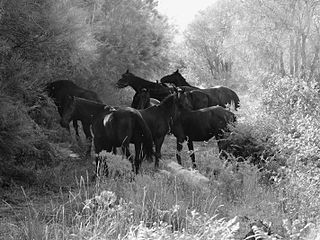 W
WThe Sanfratellano is an Italian light horse breed that originated in San Fratello, Sicily. They are a hardy breed that is used for riding, packing, and light draft work.
 W
WThe Sardinian Anglo-Arab, Sardinian, or AAS, is a horse breed from the Mediterranean island of Sardinia, where it has been selectively bred for more than one hundred years. It derives from cross-breeding Thoroughbred horses with Sardinian horses carrying Arabian blood.
 W
WThe Tolfetano or Cavallo Tolfetano is a breed of horse from the northern part of the Lazio region of Italy. It is indigenous to the Monti della Tolfa range of hills which lie within the Maremma Laziale, and which give the breed its name. The harsh terrain and limited resources of the area are thought to have contributed to the resistant and frugal nature of the breed.